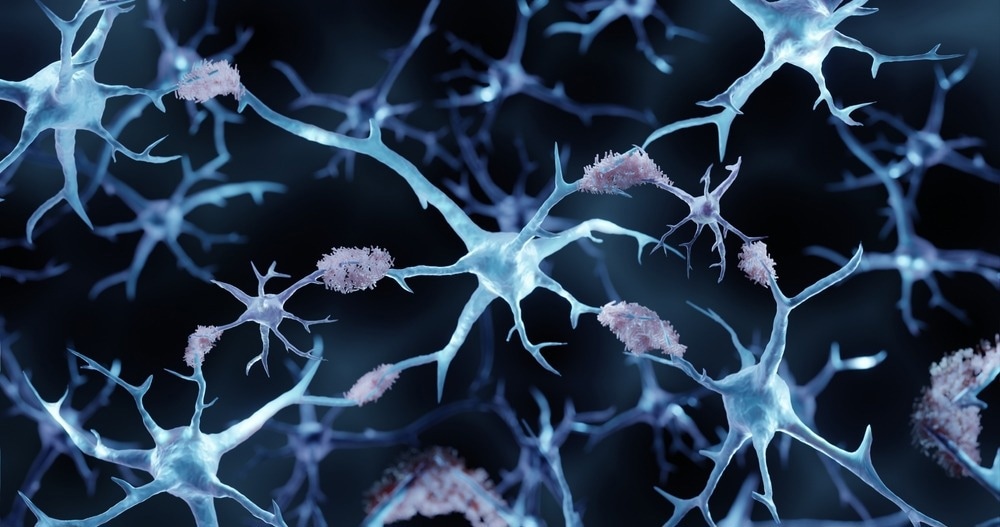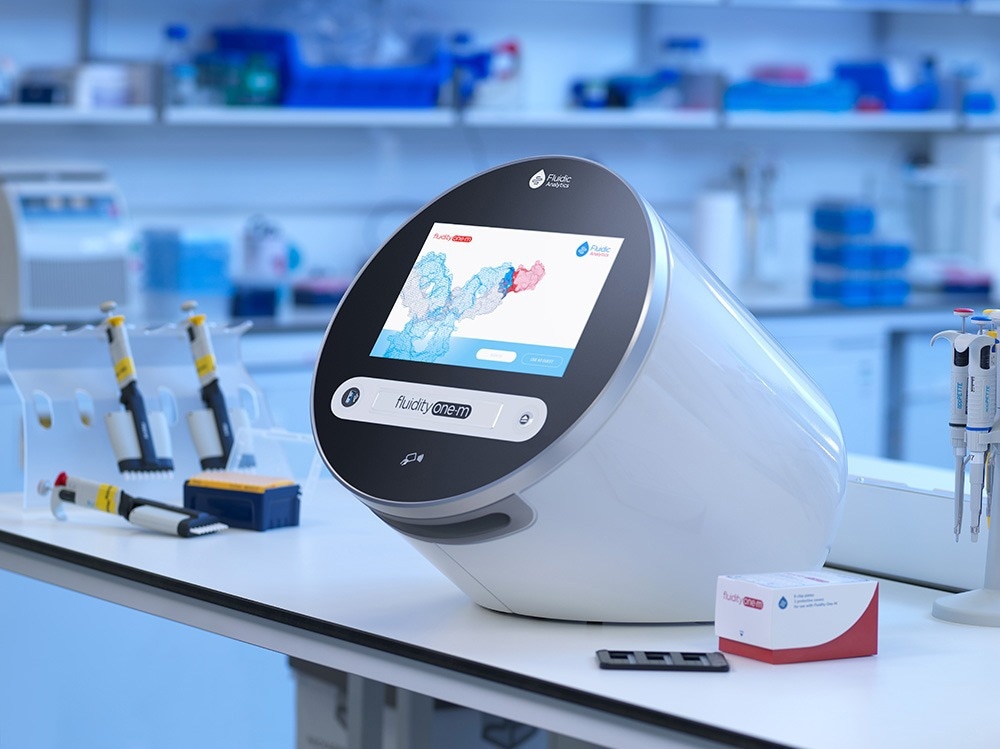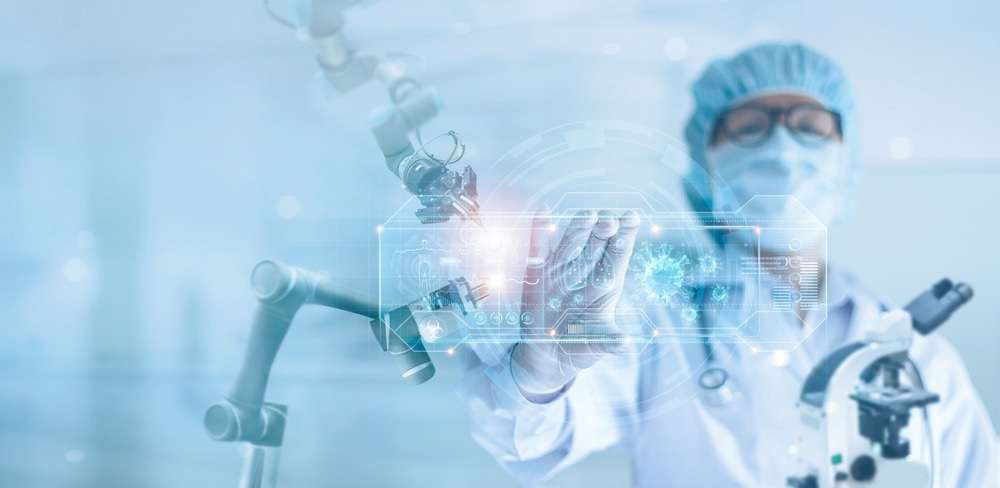As part of our SLAS Europe 2022 coverage, we speak to Andrew Lynn, the chief executive at Fluidic Analytics, about the role proteins play in understanding human disease as well as the role Europe plays within life sciences research.
Please, can you introduce yourself and tell us about your role at Fluidic Analytics?
My name is Andrew Lynn, and I am the chief executive at Fluidic Analytics.
Fluidic Analytics is a biotechnology company focused on furthering our understanding of disease. Could you tell us a bit more about why Fluidic Analytics was founded and what some of your core missions and values are?
The roots of Fluidic Analytics are scientists from the University of Cambridge, who were really inspired by the role that proteins play in the biology of disease and health, and frustrated by the way that existing tools were not able to help them understand that biology. As a result, they decided to invent their own tools.

Image Credit: ART-ur/Shutterstock.com
Your products and services focus on furthering our understanding of protein interactions. Do you believe proteins hold the power to unlock the future of human health? Why is this?
Here at Fluidic, our belief is that protein interactions are going to unlock the next great advances in healthcare and life sciences. Genomics has absolutely transformed our ability to understand the way that biology unfolds over the years. We really think, whether it is an antibody interacting with an antigen or a drug interacting with its target, that the real key to understanding biology in real-time is to understand how proteins come together to form the machinery of life.
Fluidic Analytics is based in the UK in Cambridge, where there is a hub of innovative companies within life sciences. What makes Cambridge such a special place for a company involved in life sciences research?
The history of scientific innovation at Cambridge is absolutely overwhelming. It goes back to the discovery of the electron, the discovery of the structure of DNA. It is a fantastic ecosystem of scientists and engineers, and business people, all of whom really care about understanding how biology works and making sure that those innovations are delivered to people in the form of products that really make an impact.
You are taking part in a panel discussion at SLAS EU 2022 surrounding the European ecosystem and its involvement in life sciences research. As the CEO of a European life science company, how vital is Europe to the life sciences community?
Throughout Europe, there are a number of centers of innovation in the life science industry. It is not possible to talk about the global life science industry without paying significant attention to Europe. We think Europe is going to be absolutely crucial to the next phase of advancements, and we hope in protein interactions, but in all fields as well. This means that we are really excited about the next 10, 15, and 20 years of innovation in Europe in this field.
A further aspect to this is the fact that Europe has always been a center for academic innovation, and there are great companies like Qiagen that have come out of Europe. However, I think what is really encouraging is the level of investment in our corner of the world, specifically in venture capital-backed innovation. Within Europe, the number of emerging companies coming out with absolutely fantastic innovations has absolutely exploded over the past decade, and I look forward to seeing that continue.
The real key for the next phase in Europe is scaling companies. We have been lucky enough to be involved with numerous companies that have brought important scientific innovations forward and acquired by other companies. I think the next phase in truly scalable innovation is having multiple companies become market leaders themselves.

Image Credit: sdecoret/Shutterstock.com
Europe’s scientific contributions have increased dramatically in recent years, with the UK alone having an annual turnover of over £56 billion. What advice would you give to a new European life science start-up company? Is there anything a new company needs to consider when creating a business in Europe?
I think one thing that is really important for an early-stage company is keeping an eye on the goal that you want to achieve. I know that, for us, the ambition is straightforward: to build a company that is sustainable in the long term and that, again, goes on to be a market leader. It is very easy to form a company. It is a whole lot more difficult to get a product out in the market that is making an impact. It is another level of complexity to build a company that goes on to become the acquirer itself: to become the sustainable company that ends up acquiring the next great start-ups rather than being acquired themselves.
A company’s success is not the sum of luck, strategy, and execution: it is the product of all three of those. It is very easy to focus solely on the strategy of the science that people have developed or solely focus on the luck of the company being in the right place at the right time or their fantastic execution. The reality is that not a single one of those three things can be zero if you want to succeed. So, I think that making sure you are paying attention to all three of those things - knowing when you are lucky; knowing when you have got the right strategy; but also executing and growing a company - all three of those things are crucial.
You offer a wide range of products focused on studying protein interactions on your site. Can you tell us more about some of your products and their applications within life sciences research?
We focus on trying to understand biology through protein interactions. Here’s one of the analogies we like to use to describe why this is important: If we give you a list of components in a mechanical watch –cogs, gears, screws, and springs – that list of parts is really important information about that watch, a lot like identity proteomics gives incredibly important information about a biological system. But that list of parts alone is probably not enough information on its own to allow you to build a watch from scratch or fix a watch that’s not working. What we do is something slightly different: rather than providing a list of parts, we look to understand how the parts interact with each other – which cogs fit together with which gears and how tightly each screw and spring needs to be tightened.
It’s our belief that that extra layer of information about how the parts interact - how strongly, or how weakly, or in what combination - is going to be key to understanding the biology of disease and health in exactly the same way that understanding how the parts in a mechanical watch interact could be game changer for someone trying to build a watch from scratch or fix one that’s broken. And whether it’s an antibody binding to an antigen or a drug binding to its target, biology is more than proteins sitting around being counted. Biology is proteins interacting with other molecules.
Some of the applications of our platform, which can be delivered in the form of services or benchtop instruments and consumables, are, for example, going beyond the traditional sorts of drug-target interactions that are really well served by technologies like surface plasmon resonance or Bio-Layer interference to understand interactions with challenging targets. So, if we think of bispecific antibodies, PROTACs, or fibrillar targets, those are areas in which we think our platform is starting to unlock real insights into the mechanisms of action by which drugs interact with challenging targets.
Another area that we are incredibly excited about is the ability to understand the biology of clinical samples through, again, protein interactions. A great example of this was given by COVID, in fact, in that our team had a brilliant opportunity to collaborate with a number of great researchers from several research locations: namely the University Hospital Zurich, the Fred Hutch in Seattle, from Mayo clinic, from Yale University, and from Addenbrooke’s Hospital in Cambridge.
What was really exciting about that opportunity is that it started to demonstrate the power of understanding multiple aspects of how antibodies interact with different epitopes on viruses. It also demonstrated patient-to-patient variations that just can’t be seen by looking at a titer or the identity of proteins available.
There is real potential in the broader field of immunology to personalize vaccines and ensure that we are screening patients for things like anti-drug antibody responses. All of that comes down to a protein interacting with some sort of antigen, whether it is a drug or a virus. We think that is a real area of potential growth, and it is one that we are very excited about.

Image Credit: Fluidic Analytics
The field of proteomics has seen significant advancements in recent years. Despite this, there are still challenges that we face concerning the complexity of data and difficulties in identifying proteins. How do your products and services at Fluidic Analytics help overcome some of these difficulties?
We think it is great that there are a range of technologies and products out there designed to get more data points into a machine-learning algorithm to analyze them. What we think is going to be key, and the real contribution we can make is getting more out of every single data point.
A good example of this is characterizing the mechanism of action between anti-A-beta antibody therapeutics and their A-beta targets. This can be achieved by not just quantifying the proteins present but by measuring affinity, concentration, and stoichiometry of binding.
By doing this, we get a more multidimensional view of that same protein interaction, and as a result, we gain a greater opportunity to understand what is actually happening when a drug interacts with its target.
That question is at the core of why Fluidic Analytics exists. It is absolutely fantastic that we have got technologies out there to produce floods of data and incredible numbers of data points in a very short period of time-- we think that’s really important. At Fluidic, we try to improve the quality and the density of insights that can be extracted single one of those data points.
A good example is some of the work that we have been able to do in collaboration with Lund University, in which we have been looking at the mechanisms of action of anti- A-beta drugs.
Something that we have been really excited about is research that has been undertaken to look at the differences in things like affinity or stoichiometry of binding or the identity of the target and drug interaction that underlies the biology to be able to correlate that with clinical outcomes. Once again, we get more density, and if we get more information from every data point, we think we are going to get more insights into biology.
You also offer a variety of tools for your customers, including application notes and webinars. How important is it to have a wide variety of educational tools available for your customers? How does this help to build better relationships?
Education is key to any life science tool when it comes down to it, especially new and innovative tools. We have invested a lot of time in communicating how our technology works, but far more importantly, the impact it has had in specific case studies. This means that we invest a lot of time in webinars. We invest a lot of time in case studies and in publications and collaborations as well. We think that this is key to our success.
The COVID-19 pandemic has taught us the importance of collaboration and innovation when trying to make scientific advancements. If we continue to collaborate at the same level we have seen throughout the pandemic, what could the future of the life sciences industry look like? How important is collaboration and innovation to Fluidic Analytics?
That level of collaboration during the pandemic has been astounding and inspiring. This is the sort of thing that we hope continues for a long time. If we have seen the utter speed at which these mRNA vaccines have been able to make a real difference, just think of how we could extend that into areas like, again, anti-drug antibody responses, personalizing vaccines, or personalizing other treatments that we provide. We think that collaboration is absolutely essential, and we hope that this continues long beyond the pandemic.
A great example of this is a rare autoimmune disease called MuSk-associated myasthenia gravis. This is a situation where there are multiple treatments available, but it is absolutely crucial for healthcare providers to be able to identify when one of those treatments is more or less appropriate than another so that they can switch to the treatment that will make the most difference for the patient.
The key to that is having the right diagnostics, and a real key to the right diagnostics is to be able to assess protein interactions in the body.

Image Credit: PopTika/Shutterstock.com
Are you hopeful that we will soon start to understand disease and well-being better with continued research into protein interactions? What would this mean for global health?
As we have touched on, the importance of protein interactions - whether it is an antibody interacting with a drug to create an allergic response, whether it is a more effective, higher affinity interaction between a drug and its target - all of this is utterly crucial to being able to identify more effective treatments and to be able to select treatments that are going to be more effective for specific patients. We think this could really unlock the next generation of precise and effective treatments for patients.
What’s next for Fluidic Analytics? Are you involved in any exciting projects?
We are very excited about our collaborations in the broader immunology space. This will allow us to really focus on being able to quantify, on a patient-by-patient basis, the antibody response to a certain antigen, for example, on a transplanted organ. This could also be the case whether it is a specific drug looking at anti-drug antibody responses or whether it is characterizing the mechanism of action in a real in-vivo setting.
We are really excited about the possibility of taking protein-interaction science from the drug development environment and transposing it into serum, into saliva, into plasma: wherever we think may have the greatest effect on identifying which patients will benefit from which treatments, where this can really have the biggest impact on identifying which treatments will work for which patients.
Where can readers find more information?
Our LinkedIn Profile: https://www.linkedin.com/company/fluidic-analytics/
Our Company website: https://www.fluidic.com/
About Andrew Lynn
Andrew Lynn is an entrepreneur and executive who has led three VC-backed deep-tech businesses from concept to commercialisation.
He is CEO of Fluidic Analytics, a Cambridge, UK company that provides instrumentation and services that characterize protein interactions for customers in the tools and diagnostics industry. Fluidic Analytics’ microfluidic diffusional sizing technology extends the traditional capabilities of protein interaction analysisa) beyond traditional drug targets to challenging targets such bispecific antibodies, PROTACs and fibrillar targets; and b) beyond purified environments to complex backgrounds such as cell lysate, serum, plasma and saliva.
Previously, Andrew founded Orthomimetics, a developer of regenerative medical implants for sports medicine and orthopaedic applications. During his tenure as CEO, Orthomimetics developed its flagship product from lab-scale production to a CE-marked device distributed in multiple territories across Europe. Orthomimetics was acquired by TiGenix (now a Takeda company) in 2009. Andrew was then appointed CEO of CamGaN, a Company whose gallium�nitride-on-silicon technology has developed from the technology-concept stage to producingmicro-LEDs that power some of today’s most cutting-edge virtual reality and augmented reality devices. CamGaN was acquired by Plessey Semiconductors in 2012.
His experience guiding companies through eight equity financings, four product launches and two trade sale exits give him a unique perspective on funding cycles, company evolution and the process of scaling businesses.His efforts have earned him recognition in Europe as an inaugural winner of a Science|Business Academic Enterprise Award and in the US as a member of Technology Review Magazine’s TR35 list of the world’s top young innovators, leaders and entrepreneurs. He was elected a Fellow of the Royal Academy of Engineering in 2021.